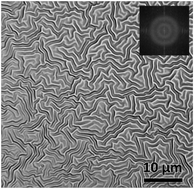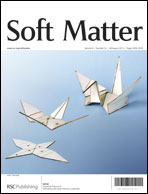Surface wrinkling by chemical modification of poly(dimethylsiloxane)-based networks during sputtering
Abstract
Wrinkling is an important mechanical phenomenon that generates periodic topographical patterns across a surface. This paper presents experimental evidence that surface wrinkles, which form consequent to thin film magnetron sputtering of either indium tin oxide (ITO) or aluminum on poly(dimethylsiloxane) networks (PDMS-N) made from a commercial Sylgard-184 kit, result from chemical modification of the PDMS-N surface as opposed to extrinsic thermomechanical stresses originating from differential thermal expansion.


 Please wait while we load your content...
Please wait while we load your content...